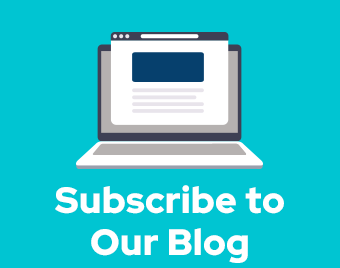One of the biggest care management challenges faced by modern daypractitioners is keeping patients focused on the immediate problem or reason for a visit. It's often easy to default into personal conversations with the patient as you connect as humans, but aimless conversations and off-topic detours can prove lethal to the typical practice schedule and mean certain essential aspects of the visit are overlooked or missed altogether, thus creating potential issues with reimbursement.
Even more challenging is trying to engage and maintain meandering focus while navigating the sometimes-rigid conversation confines of chronic care management (CCM). Since CCM is time- focused from a billing perspective, finding the right CCM software that will not only help ensure you receive the reimbursements you deserve, but also help you keep the conversation with your patient on track while effectively meeting time requirement guidelines.
Understanding the Chronic Care Management Challenge
When delivering care management services, it's important to tailor each patient encounter and conversation to the situation at hand, but many practices find it difficult to strike a balance between keeping the patient engaged and focused on the often-siloed conversation subject matter. The result is frequently a messy array of hurdles that can create issues when working towards timed care management CCM CPT codes.
Chronic care management guidelines dictate that several different topics be touched on over the course of each encounter. This brings up the question: How can one guide the conversation efficiently and still ensure that nothing is overlooked?
While CMS does not publish a script or template for either the initial care plan creation or subsequent follow-up conversations, it does state that "a comprehensive care plan for all health issues typically includes but is not limited to the following elements: a problem list, expected outcome and prognosis, measurement treatment goals, symptom management, planned interventions and identification of the individuals responsible for each intervention, medication management, community/social services ordered, a description of how services of agencies and specialists outside the practice are directed/coordinated, schedule for periodic review and, when applicable, revision of the care plan."
With broad CMS guidelines, care managers and providers are often left with the burden of finding both interesting and clinically significant ways to continue the conversation and keep the patient engaged month to month, thus providing the level of care that truly benefits patients while also generating the ongoing revenue that helps a practice survive and thrive. In response, software vendors, such as Prevounce, have stepped up, creating template solutions within their software to help care managers achieve the crucial objectives of achieving productive conversations that touch on the key components of effective CCM while also checking the boxes required for payment.
Help Maximize Chronic Care Management Efficiency With Guided CCM Templates
A quick Internet search can turn up dozens of vendors touting that their chronic care management software platforms and CCM templates are the best. Promises of "maximum reimbursement" and "increased efficiencies" sound heaven sent, but what should a "good" chronic care management template really include?
Ideally, a good CCM template will utilize a care plan creation wizard that walks care managers through the entire process of creating a personalized plan for each patient based on the chronic conditions being managed. When leveraged effectively, a well-created original care plan will drive long-term patient engagement and increase the clinical significance of a chronic care management program.
Using the right CCM software can also help your care team organize and move through the various key topics listed below and others, guiding conversations with patients, driving long-term patient engagement, and increasing the clinical and financial significance of a CCM program. The following reflects Prevounce’s templated care plan structure that is utilized in CCM programs nationwide. For non-Prevounce users, it can serve as a model for building your own template.
1. Tracked problem list
This section of the care plan is intended to identify current and specific patient problems quickly and efficiently, allow them to be managed effectively, and help ensure conversations stay focused and consistent. This could include the chronic conditions being managed through CCM as well as any additional problems the patient and/or care team would like to establish a baseline for and monitor. There may be times where it is appropriate to focus time on one condition/problem over another based on a patient's most prevalent concerns.
2. Measurable treatment goals
This section of the care plan should definitively set goals in the form of benchmarks and/or metrics for the patient to achieve so the care team can create a plan alongside the patient to help them be successful. Periodically checking in on the progress towards these goals can help the care team spot potential noncompliance. In addition, the patient can be praised and acknowledged for progress towards these goals, increasing patient engagement and satisfaction in their own healthcare.
3. Identify barriers to goals and patient concerns
This aspect of the plan may be the most personal to patients. How a patient is feeling about their personal health and perceived barriers to achieving health goals can be a particularly personal subject but is also a fantastic opportunity to solidify the relationship between the patient and their care manager. This is also an opportunity to increase that patient's engagement in their own healthcare by making the experience truly about them and not about their condition(s). The more the care team knows about the problems a patient foresees with obtaining health goals or maintaining compliance, the more the care team can identify and mitigate those concerns going forward.
4. Medication management
Medication reconciliation and medication management are crucial to maintaining a compliant CCM program. This section of the care plan is intended to help care teams quickly and efficiently identify issues the patient may be experiencing with their medications and will include everything from managing side effects to navigating patient difficulty affording their medications. Being vigilant in managing a patient's medications can increase patient medication compliance and chronic care management success.
5. Patient Instructions
The patient instructions portion of the care plan should contain personalized instructions and an action plan for the patient. Reminding the patient of their specific instructions and tailoring this section of the plan to be more conducive to the unique patient can help increase patient engagement and CCM compliance.
6. Community and Social Resources
This section of the care plan serves to make sure the patient is aware of the resources they can use to increase their knowledge of their conditions and increase their quality of life. The appropriate resources may change over time as patient barriers evolve or as new goals are created. This is also an appropriate time to help ensure the patient has access to other resources they may need, such as assistance paying for medications or getting rides to and from their appointments.
7. Provider Information
When the care plan is first created, the billing provider's information should automatically be stored in this section. Having a conversation with the patient about their other care providers can help improve the continuity of care and paint a more holistic picture of the patient's entire care team outside of the practice they are enrolled through.
8. Other Information
This final piece of the care plan we will highlight serves to house any information that may not be pertinent to other areas of the care plan itself but may be pertinent to the patient in general. Adding reminders to discuss certain personal information can also help increase patient engagement and make the patient feel heard.
Importance of the Right Chronic Care Management Software
The software you choose as the backbone for your chronic care management program will play a pivotal role in your program's success. Most importantly, the right CCM software will help you deliver the care your patients need to better manage their chronic conditions and live healthier, fuller lives. But it should do so much more,including helping you:
- Identify which of your patients is eligible for chronic care management
- Ensure compliance
- Get credit and paid appropriately for the time spent on CCM
- More easily communicate with patients
- Code and bill effectively and efficiently
To see how the Prevounce Chronic Care Management platform does all this and more, schedule a time to see it in action.






